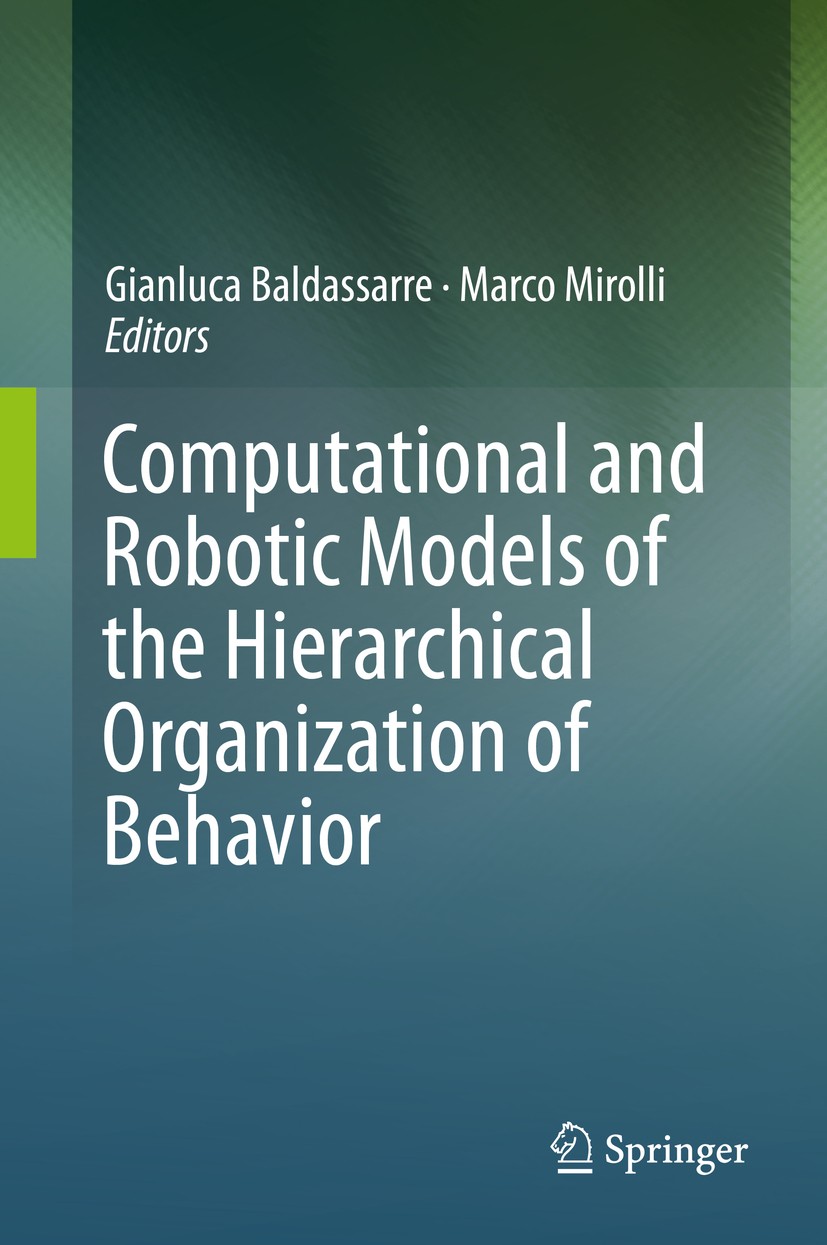| 书目名称 | Computational and Robotic Models of the Hierarchical Organization of Behavior | | 编辑 | Gianluca Baldassarre,Marco Mirolli | | 视频video | http://file.papertrans.cn/234/233254/233254.mp4 | | 概述 | Interdisciplinary authors from related disciplines such as artificial intelligence, robotics, artificial life, evolution, machine learning, developmental psychology, cognitive science, and neuroscienc | | 图书封面 |  | | 描述 | .Current robots and other artificial systems are typically able to accomplish only one single task. Overcoming this limitation requires the development of control architectures and learning algorithms that can support the acquisition and deployment of several different skills, which in turn seems to require a modular and hierarchical organization. In this way, different modules can acquire different skills without catastrophic interference, and higher-level components of the system can solve complex tasks by exploiting the skills encapsulated in the lower-level modules. While machine learning and robotics recognize the fundamental importance of the hierarchical organization of behavior for building robots that scale up to solve complex tasks, research in psychology and neuroscience shows increasing evidence that modularity and hierarchy are pivotal organization principles of behavior and of the brain. They might even lead to the cumulative acquisition of an ever-increasing number of skills, which seems to be a characteristic of mammals, and humans in particular..This book is a comprehensive overview of the state of the art on the modeling of the hierarchical organization of behavio | | 出版日期 | Book 2013 | | 关键词 | AI; Alife; artificial intelligence; artificial life; brain science; cognition; control; embodiment; evolutio | | 版次 | 1 | | doi | https://doi.org/10.1007/978-3-642-39875-9 | | isbn_softcover | 978-3-662-51402-3 | | isbn_ebook | 978-3-642-39875-9 | | copyright | Springer-Verlag Berlin Heidelberg 2013 |
The information of publication is updating

|
|
 |Archiver|手机版|小黑屋|
派博传思国际
( 京公网安备110108008328)
GMT+8, 2025-11-18 03:04
|Archiver|手机版|小黑屋|
派博传思国际
( 京公网安备110108008328)
GMT+8, 2025-11-18 03:04


